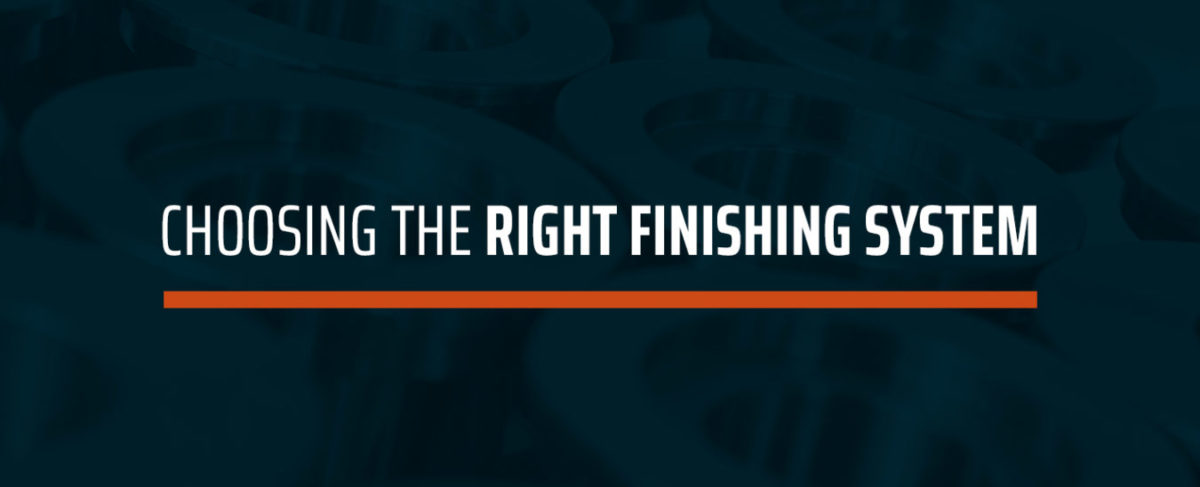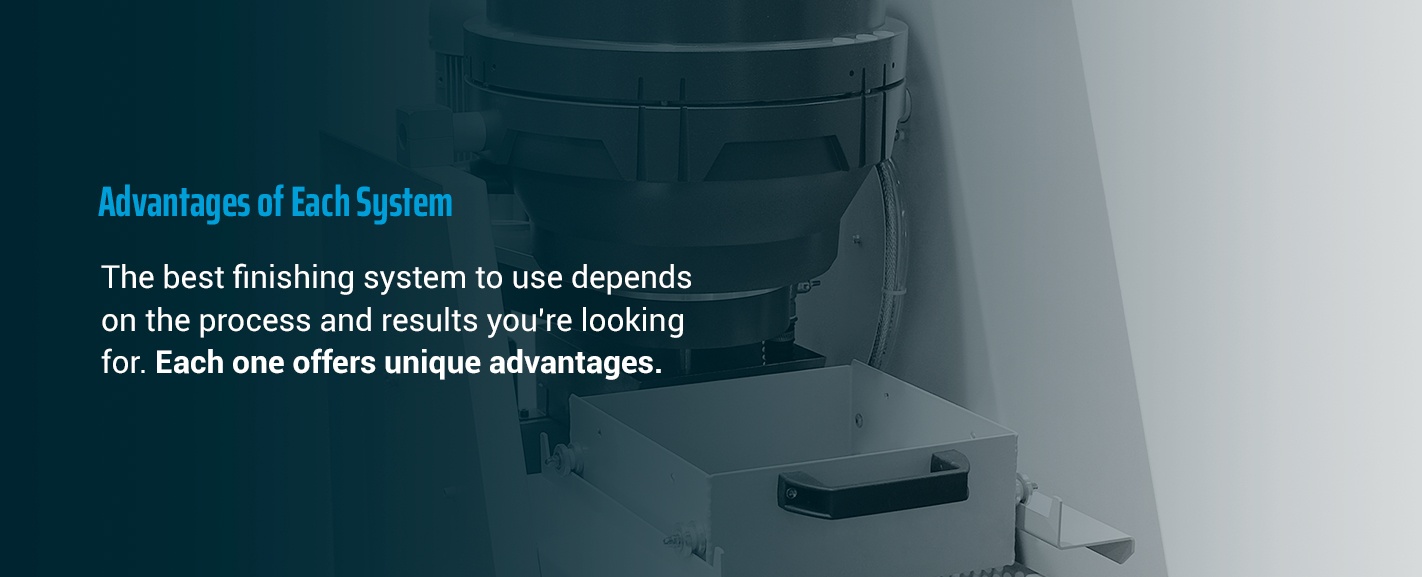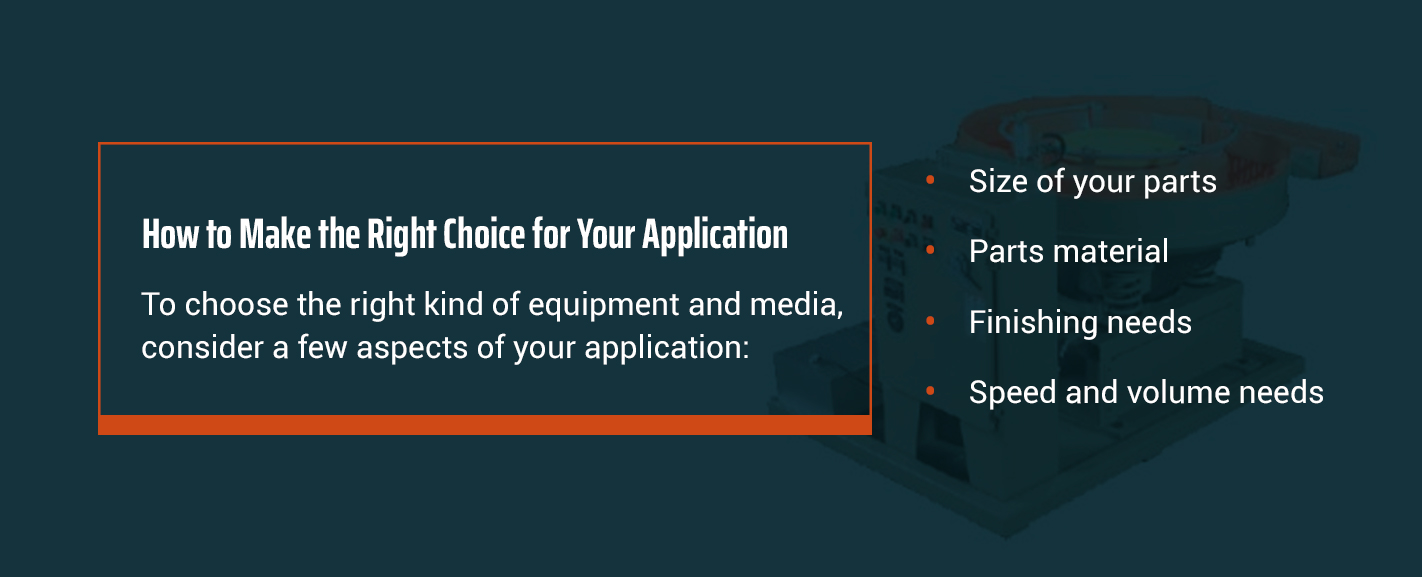
January 6, 2021
Finishing systems provide a way to improve the finish on metal parts by cleaning, deburring, deflashing, descaling, polishing or otherwise smoothing and refining surfaces. Finishing metal components can make them safer to work with, more suitable for manufacturing standards and shinier for marketing purposes. When you need to finish parts, you should choose the right finishing equipment system and media to do the job right.
The Different Types of Equipment Systems
Finishing systems generally fall into two main categories, differentiated by the way they create friction: tumble and vibratory finishing. Here’s a closer look at these methods:
- Tumble finishing: In tumble finishing systems, also called tumbling barrel finishing, you place parts into a rotating horizontal barrel. The rotation causes the parts to move up the side of the barrel and slide back down, making them collide with each other.
- Vibratory finishing: In vibratory finishing systems, you place metal pieces into a tumbler. The force in the vibratory tumbler causes the media and parts to rub against each other, deburring and polishing the parts. Vibratory finishing can achieve a smoother finish than tumble finishing.
In both of these system types, you place the parts that need finishing into the tumbler along with water, a compounding agent and some type of abrasive media, such as ceramic, steel or plastic. Different types of blasting media can deburr and polish various materials.
While tumble finishing and vibratory systems are the two main finishing systems, various types of equipment fall into these categories. For example, you can find vibratory deburring equipment in the form of bowls, tubs and thru-feed machines. Tumble finishing systems come in traditional barrel machines, centrifugal systems — which we’ll discuss more — and tumble blasting machines. With tumble blasting equipment, parts are rotated slowly and randomly exposed to an abrasive from a sandblasting spray gun.
There are also other types of finishing systems, including centrifugal, tumble blasting and spindle and slurry systems, which use various methods of finishing parts. Here is more detail on those techniques:
- Centrifugal: Centrifugal systems, which come in centrifugal disc and barrel machines, use centrifugal force to push the parts and the media inside the machine against the periphery of the tumbler.
- Spindle and slurry: In spindle and slurry systems, also known as flowing abrasive machines, you insert parts mounted to a rotary spindle into a rapidly moving abrasive slurry.
Advantages of Each System

The best finishing system to use depends on the process and results you’re looking for. Each one offers unique advantages. Explore what makes each of these systems unique and why you might choose one over another.
Tumble Systems
Tumble systems tend to be one of the most affordable options, which is why some people choose to purchase a tumbling barrel. While centrifugal barrel systems can create enough force to finish parts efficiently, traditional tumbling barrels work slowly and are limited in the results they can deliver. Tumble deburring equipment can remove pronounced burrs, but it may fall short if you want a finer result. It can also cause surface damage in some cases.
Vibratory Systems
Vibratory systems deliver a smaller radius and smoother surface compared to tumble systems and are more effective at finishing recessed areas on parts. They also work at a much faster speed than tumble systems. Vibratory bowls, tubs and thru-feed machines all offer various features, so if you determine vibratory finishing is the right choice for your application, you can compare these options. You can also choose high-energy options with exceptionally fast cycles.
Centrifugal Systems
Centrifugal equipment is similar to tumble systems but with some notable advantages. The high level of centrifugal force in high-energy systems is enough to keep the pieces from tumbling, which eliminates the risk of parts colliding and damaging each other’s surfaces. These systems also work faster than traditional tumble systems. Centrifugal systems tend to work best for smaller components.
Spindle and Slurry Systems
A flowing abrasive process is an excellent option when you need to keep part dimensions to extremely tight tolerances and achieve a smooth, uniform finish. Since parts are fixed to rotary spindles, they don’t collide with each other, preventing part-on-part impingement. In addition to being a very precise process, spindle and slurry finishing is also fast, with cycles taking anywhere from five seconds to five minutes.
Media Types
Another key aspect of a finishing system is the media you use. Media comes in many different shapes, sizes and materials to suit numerous applications. Some of the most common types of media include:
Occasionally, natural, randomly shaped media like wood pegs, walnut shells or corn cobs are used, but these types of media are rare for industrial applications.
How to Make the Right Choice for Your Application

To choose the right kind of equipment and media, consider a few aspects of your application:
- Size of your parts: Think about the size of your metal pieces for tumbler deburring. If you need to finish large parts, you can consider using a tumble or vibratory system. For smaller components, you’ll likely want to opt for a centrifugal or spindle and slurry system. Spindle and slurry systems also work well for larger metal pieces.
- Parts material: Think about what materials your parts consist of to help you choose the appropriate media material. For example, stainless steel parts generally need to be paired with ceramic media, and aluminum parts need plastic media. Usually, parts with harder surfaces require more aggressive media.
- Finishing needs: You also have to consider your finishing solution needs. Do you only need to deburr? What about remove rust or polish the components? How uniform and smooth does the finish need to be? Different types of media and equipment can help you achieve the desired results.
- Speed and volume needs: When choosing a finishing system, you should also consider your timing needs. Some systems, as we’ve seen, work considerably faster than others. If you need to finish large amounts of parts fast, you’ll want to choose a system that can keep up. This factor rules out a traditional tumbler barrel.
Order Finishing Systems From Advanced Deburring and Finishing
At Advanced Deburring and Finishing, we offer a range of excellent finishing systems to help you get the job done. Explore our website for each type of system to learn more. You can also contact us with questions if you’re unsure which finishing system makes the most sense for your application. Whatever high-performance finishing equipment you need, we sell the system!